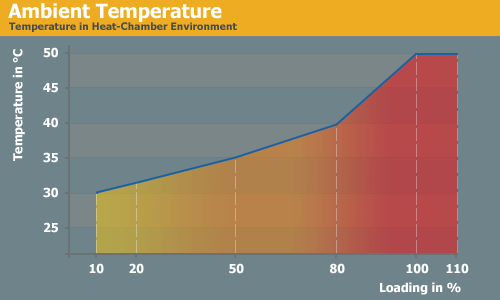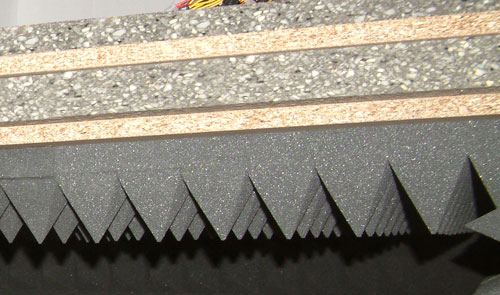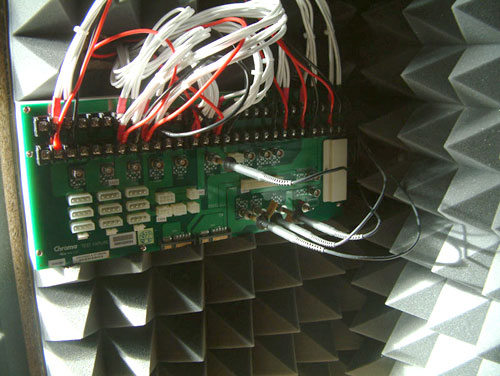Silverstone ST45NF Nightjar
by Christoph Katzer on August 25, 2008 1:00 AM EST- Posted in
- Cases/Cooling/PSUs
Testing with the Chroma ATE Programmable Load

Our test equipment consists of two Chroma programmable DC Loads that enable us to test power supplies with an output of up to 1500W. The biggest advantage of the Chroma DC Loads is simply the high precision it provides. It can measure differences as small as 0.001V and 0.0001A, which will provide us with best-in-class results.
When programming the Chroma with specific amounts of load calculated according to the ATX norm, we are able to load power supplies to an exact percentage. We can now show results at every specific percentage needed. To get the best overview of a power supply, we load each unit with 10%, 20%, 50%, 80%, 100%, and 110% of the specified output. This is easy to calculate for a 1000W power supply: the 10% load is 100W and 110% load is 1100W. Remember that this is the amount of power the PSU delivers; due to inefficiencies, a power supply will actually draw more power from the wall.
Note: If you would like to know more about our testing methodology, equipment, and environment, please read our PSU testing overview.
We have added an additional 10% on the highest load to see how the units perform with overload. This test will be performed in all future reviews. The overload test is performed at room temperature as well as under more stressful conditions; to ensure we are not too cruel to the power supplies, we will keep the ambient temperature at 50°C in the stress test. Experience shows that many units can stand the overload at room temperature but will experience problems with higher temperature and overload together. Only the best-built units will survive this.

The Testing Environment
There is one flaw in testing power supplies with programmable loads while trying to measure the sound pressure levels at the same time. Because the programmable loads get very loud, there is no chance of hearing the power supply on the test stand. In order to make accurate measurements of the noise levels we needed a way to separate the test unit and the programmable loads. Our solution was to build a very thick box around the unit.

We concluded that a five-layer box with a total thickness of 6" (15cm) containing two layers of wood and three layers of special foam would suffice. It is designed as a box within a box. The inner box does not touch any part of the outer box, making it difficult for acoustic noise to pass through in the form of vibration. Each box is isolated on both sides with a layer of heavy foam that is normally used to insulate engines. On the inside we have an additional layer of 4" (10cm) thick pyramidal foam on every side of the box to eliminate the acoustic waves coming from the test object as well as we can.

To ensure a completely closed system we installed the printed circuit board that the connectors of the power supply are attached to inside the anechoic room/box. In other box designs, you would need to put all the cables through the wall. Unfortunately, that would result in the inside of the box not being fully isolated anymore. Our design keeps everything that needs to be connected inside of the box and maintains isolation.










20 Comments
View All Comments
JonnyDough - Tuesday, August 26, 2008 - link
See subject.Why do I want them to sell well?
Because more sales of high quality components = lower cost on great components due to economies of scale = better PSUs for everyone.
MLTodd - Monday, August 25, 2008 - link
The power supply looks great, but nightjar is another name for chamber pot, something that you urinate in at night in order to avoid the long cold walk to the outhouse. What was the marketing department thinking???aos007 - Saturday, September 6, 2008 - link
That was the first thing I thought about as well (chamber pot), and English even isn't my first language. On the other hand I have certainly never heard of a bird named Nightjar nor would I think a bird name is appropriate for a PSU anyway. Not sure why would anyone think only "history buffs" would know this. Does anyone read or go to museums any more? I thought schools are supposed to have mandatory reading materials to make you read classics and have school trips to learn about history. Do they teach anything in school these days?AmberClad - Monday, August 25, 2008 - link
Looking at Wikipedia, it's apparently a type of bird too. Which I didn't know until now -- I've always understood it to mean "chamberpot" as well. Surprisingly, Wiki doesn't have that definition...Being a Taiwanese company, one would assume that they're not familiar with the unsavory alternate meaning of the word.
strikeback03 - Monday, August 25, 2008 - link
When was the last time anyone who might be considering one of these used an outhouse, a chamberpot, or a nightjar? Other than history buffs, don't think many would know it isn't a bird or just a made up name.JarredWalton - Monday, August 25, 2008 - link
I actually thought it was a term for a chamber pot as well, but it seems very few places on the web still list that meaning. I was happy to know that there's a bird called a Nightjar, as that sort of makes the name sensible (inasmuch as naming a PSU after a bird can make sense).AmberClad - Monday, August 25, 2008 - link
Aha, so I'm far from the only person who immediately thought of a chamber pot when I saw that name. I actually went and Googled the term "night jar" too, and I was also surprised at the relatively few references to it being a piss pot (there were some though, so at least I knew I wasn't going crazy).Btw, have you guys mentioned this to the Silverstone people? I'm not sticking a nightjar into my case. Everytime I see that product name, I get unpleasant mental images that I can't get out of my head.
nubie - Monday, August 25, 2008 - link
I don't think it matters. Look at Nintendo and their "Wii Play" ads, if creepy men bringing their "Wii" over to play with your family doesn't hurt sales how will the merest hint of urine hurt a product practically no-one will notice?JonnyDough - Tuesday, August 26, 2008 - link
All the above comments make me wish AnandTech had a rating system on the comments. However, I've found that on sites like Tom's Hardware, the "authors" who never seem to preread their "work" (copying) before posting seem to rate each other up. Then they downrate anyone who opposes them. So I guess it's better if I just sit here and smile and agree in silence. Oops, I've said too much.emboss - Monday, August 25, 2008 - link
You're running the scope way too fast. The switching speeds of most modern PSUs is around 100 KHz, which means you want a timebase of ~10 us, give or take. At 40 ns, you're not going to see anything below a MHz or so, which is almost certainly going to be noise coming from outside the PSU (as opposed to PSU ripple). Also, if you're using AC coupling, make sure the cutoff frequency is well below the 100 KHz mark. One of the scopes I work with has a 250 KHz cutoff (-3 dB) when in AC coupling mode, which would hide any 100 KHz ripple.The main periodic signal in the traces you have is in the order of 100 MHz, and there's no way that's coming from inside the PSU.
Apart from that, good article :)